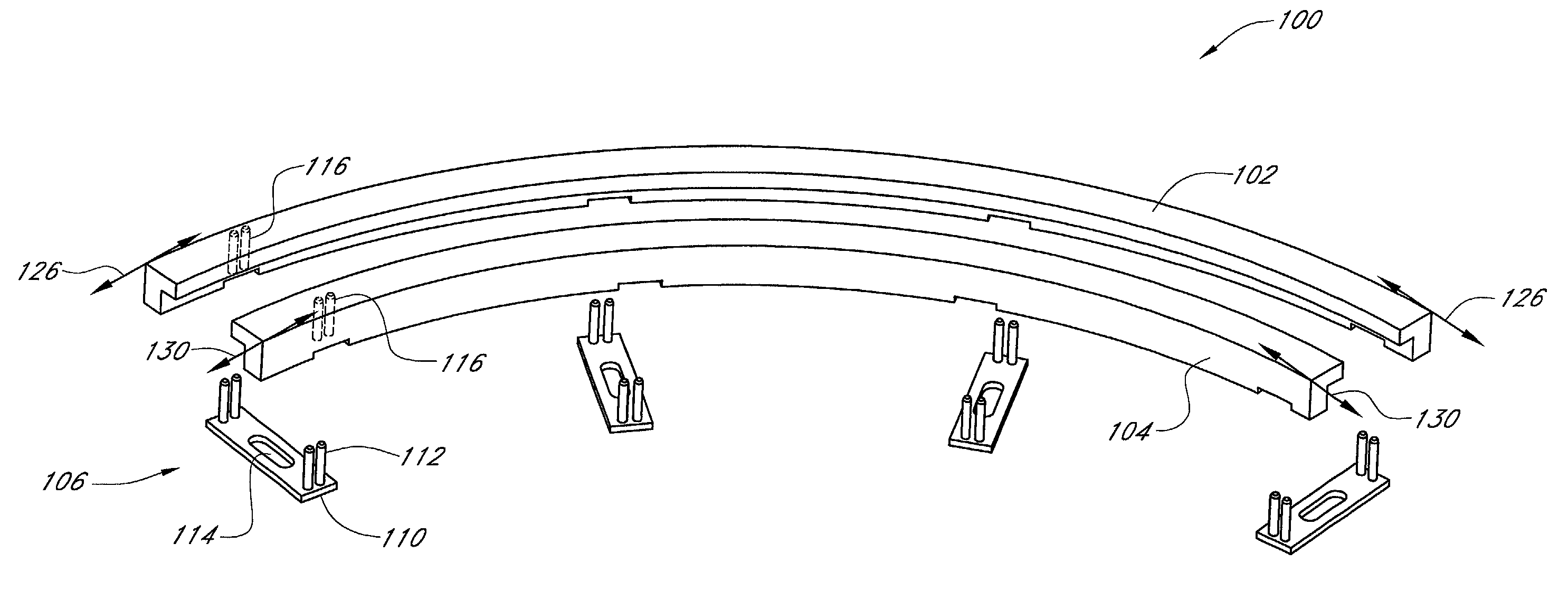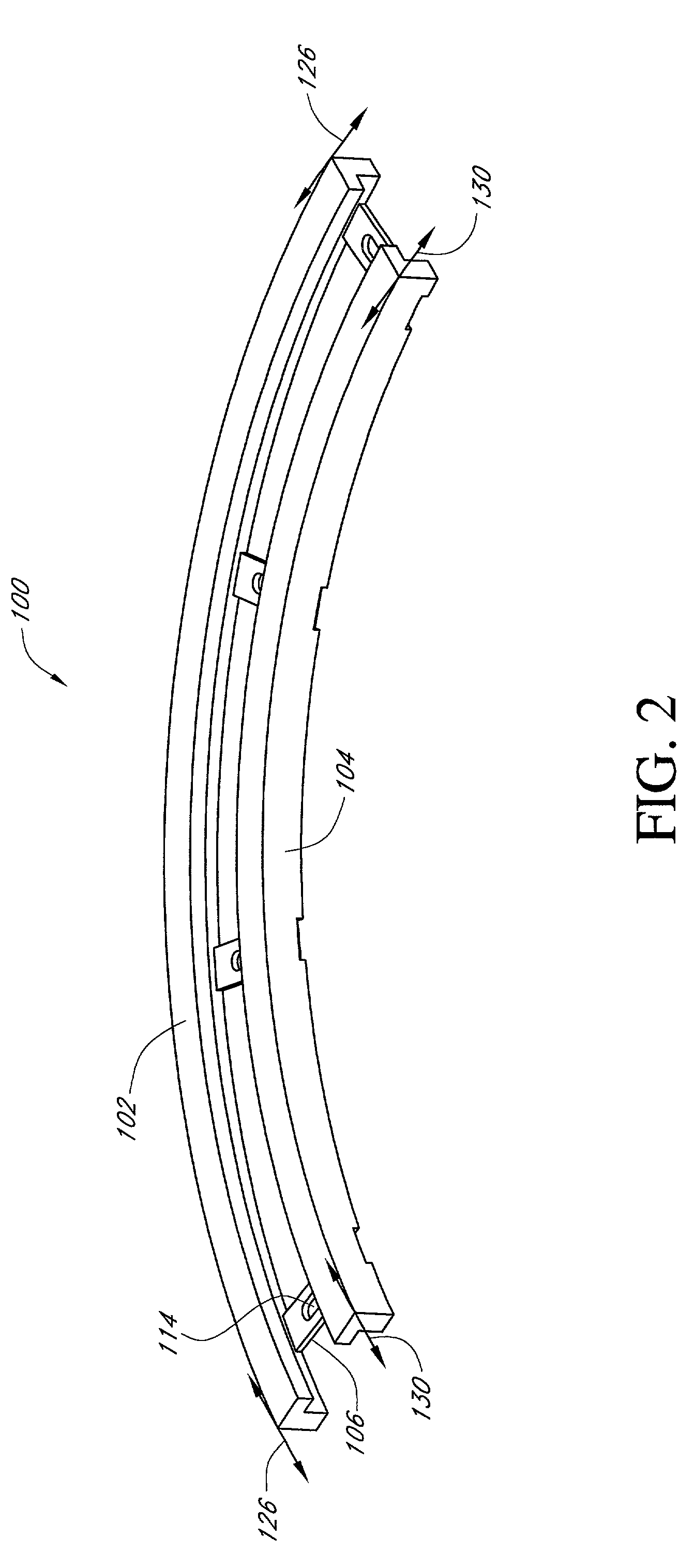Conveyor chain guide system
a chain guide and conveyor technology, applied in conveyor parts, rollers, transportation and packaging, etc., can solve the problems of chain guide style, chain guide tight or loose sections, excessive wear, etc., and achieve the effect of less plastic material, cost saving, and convenient cleaning
- Summary
- Abstract
- Description
- Claims
- Application Information
AI Technical Summary
Benefits of technology
Problems solved by technology
Method used
Image
Examples
Embodiment Construction
[0029]Reference will now be made to the drawings wherein like numerals refer to like parts throughout. FIG. 1 illustrates one embodiment of a curved chain guide assembly 100 in an exploded perspective view. The curved chain guide assembly 100 is adapted to locate and support a conveyor chain in a conveyor system. The conveyor chain can comprise a plurality of interconnected chain links or a continuous belt. The curved chain guide assembly 100 can be used in combination with straight chain guide assemblies 120 (FIG. 3) to enable construction of a conveyor chain guide system 140 (FIG. 5).
[0030]The curved 100 and straight 120 chain guide sections are adapted to be interconnected so as to abut adjacent chain guide sections 100, 120 so as to maintain the chain guide sections 100, 120 tangentially continuous at points of abutment. Thus, the chain guide sections 100, 120 facilitate construction of the conveyor chain guide system 140 with smooth transitions between adjoining curved and stra...
PUM
 Login to View More
Login to View More Abstract
Description
Claims
Application Information
 Login to View More
Login to View More - R&D
- Intellectual Property
- Life Sciences
- Materials
- Tech Scout
- Unparalleled Data Quality
- Higher Quality Content
- 60% Fewer Hallucinations
Browse by: Latest US Patents, China's latest patents, Technical Efficacy Thesaurus, Application Domain, Technology Topic, Popular Technical Reports.
© 2025 PatSnap. All rights reserved.Legal|Privacy policy|Modern Slavery Act Transparency Statement|Sitemap|About US| Contact US: help@patsnap.com



